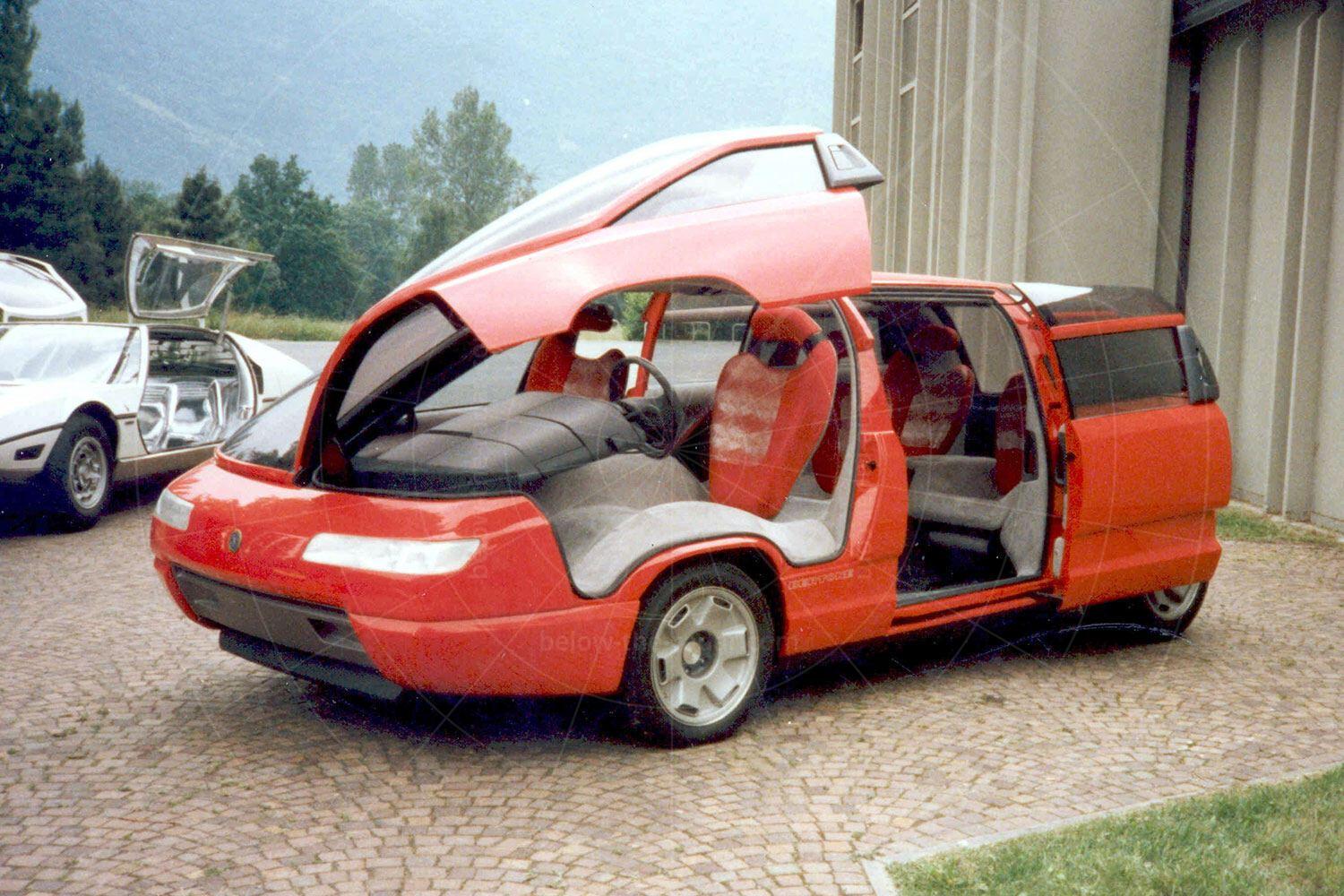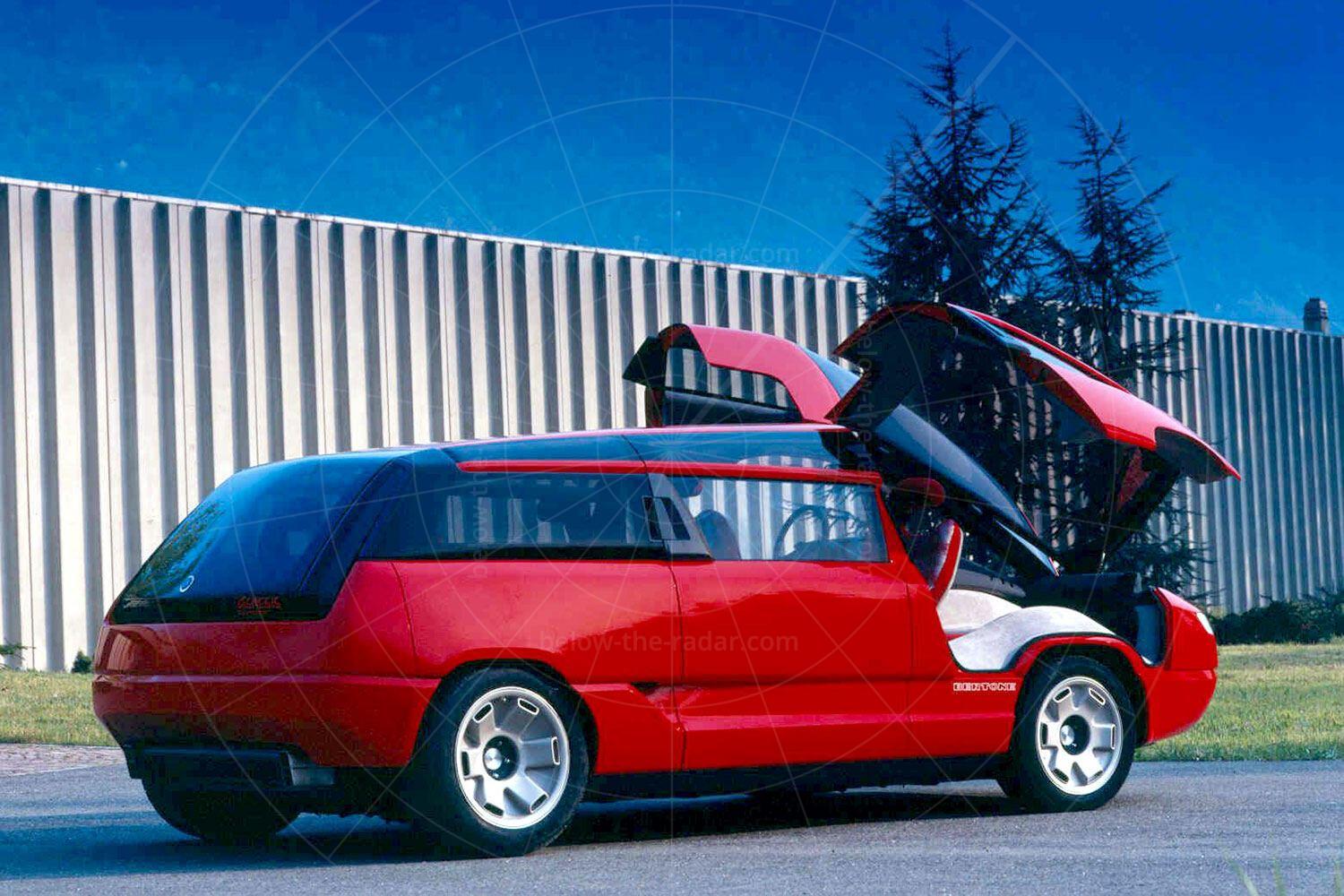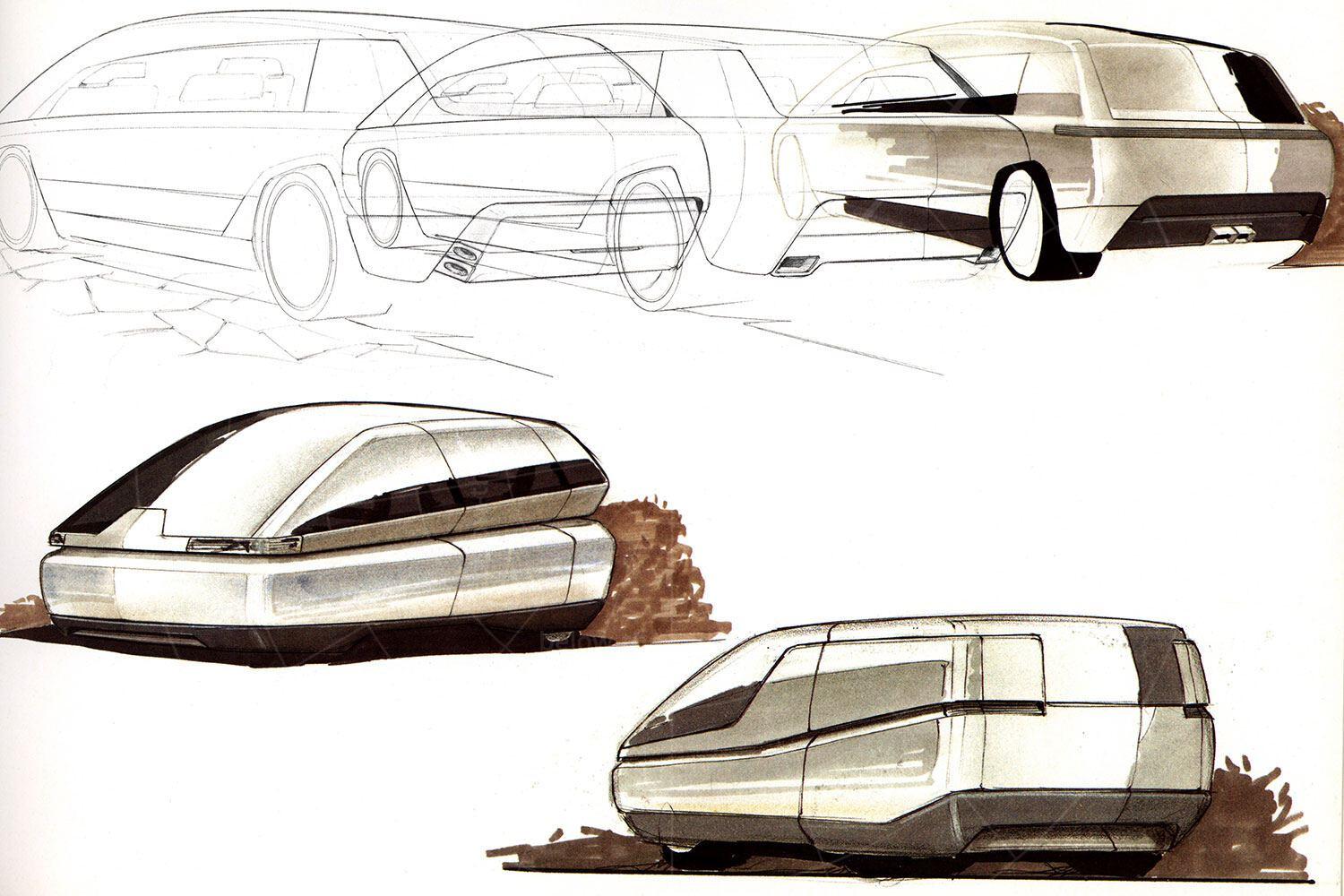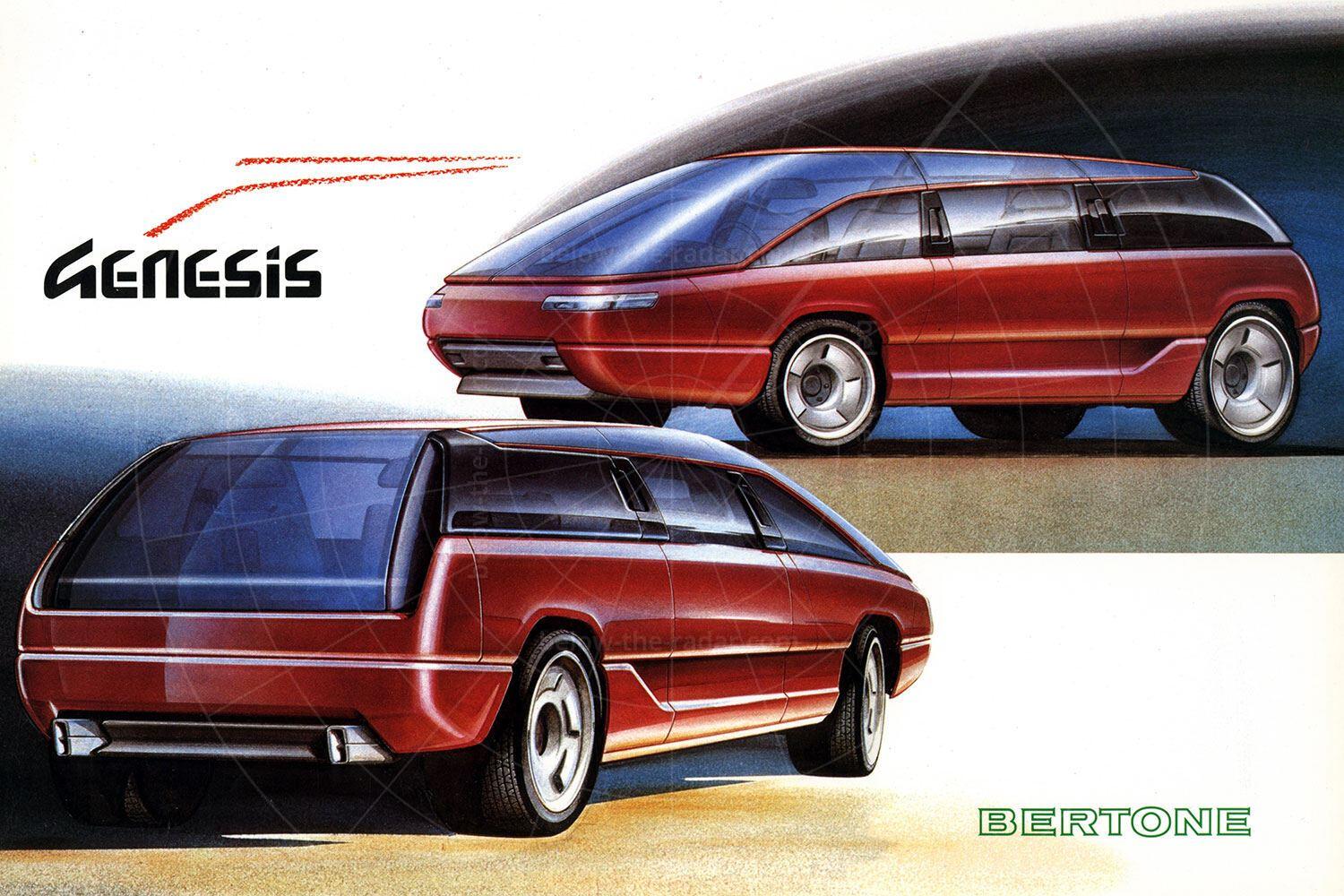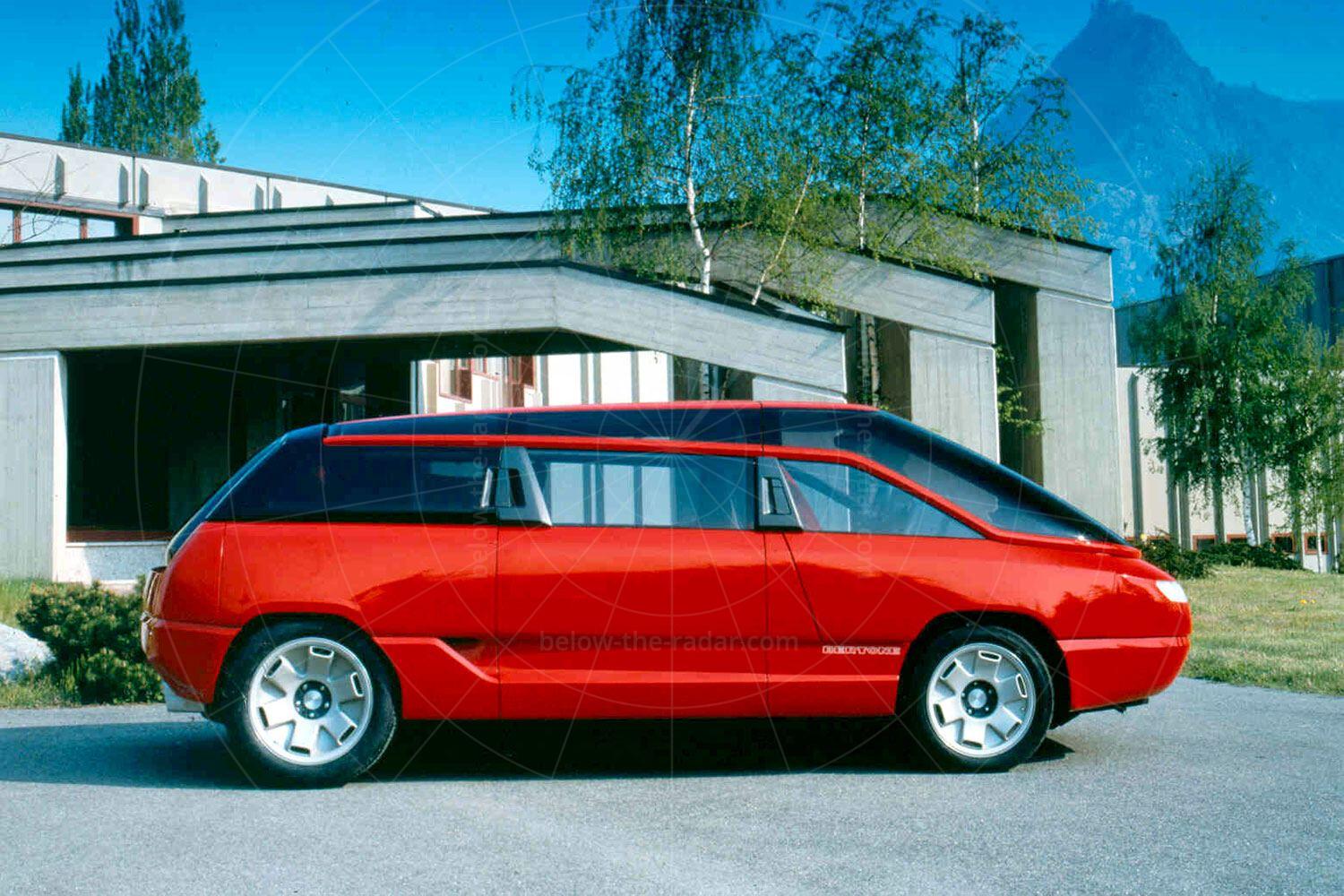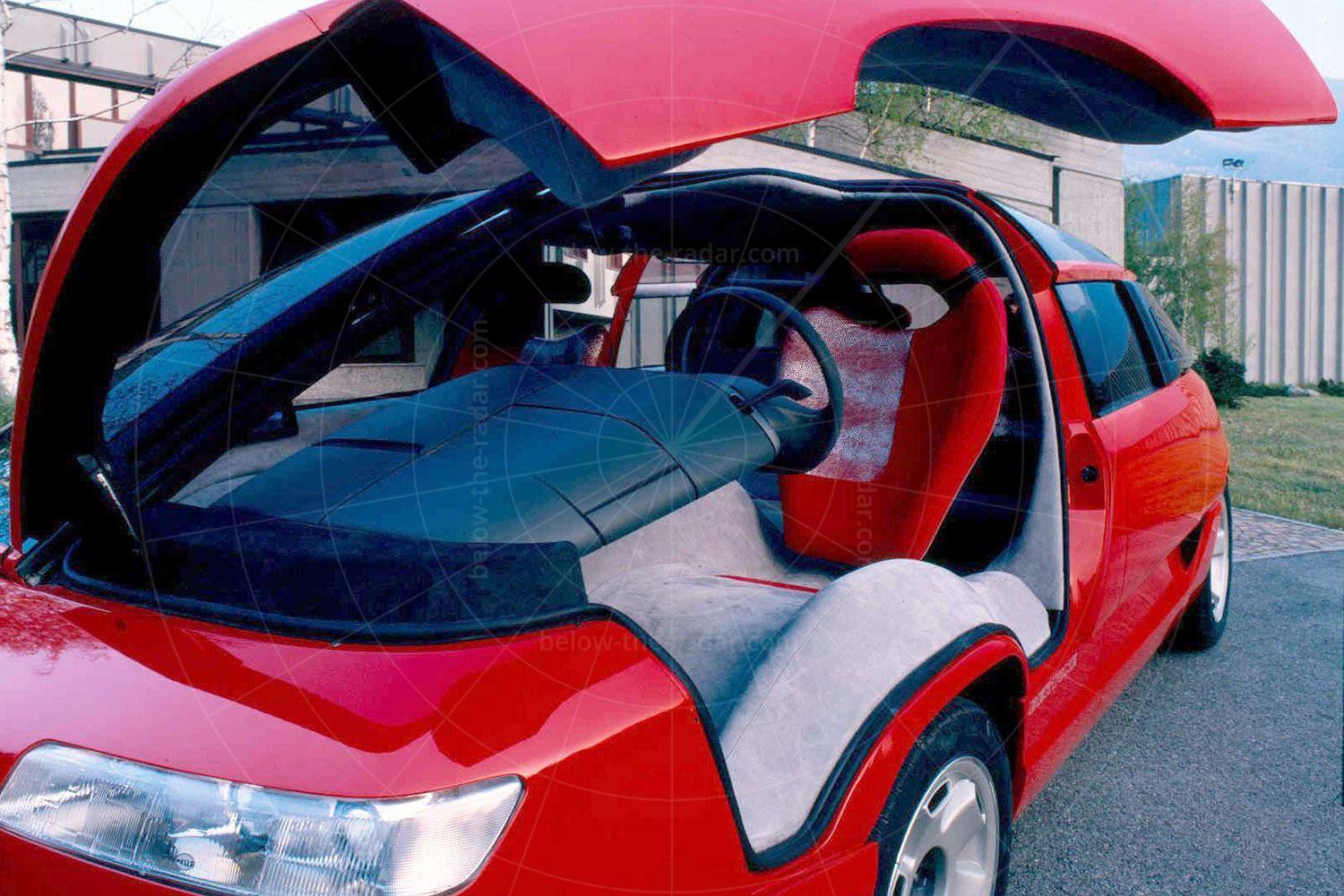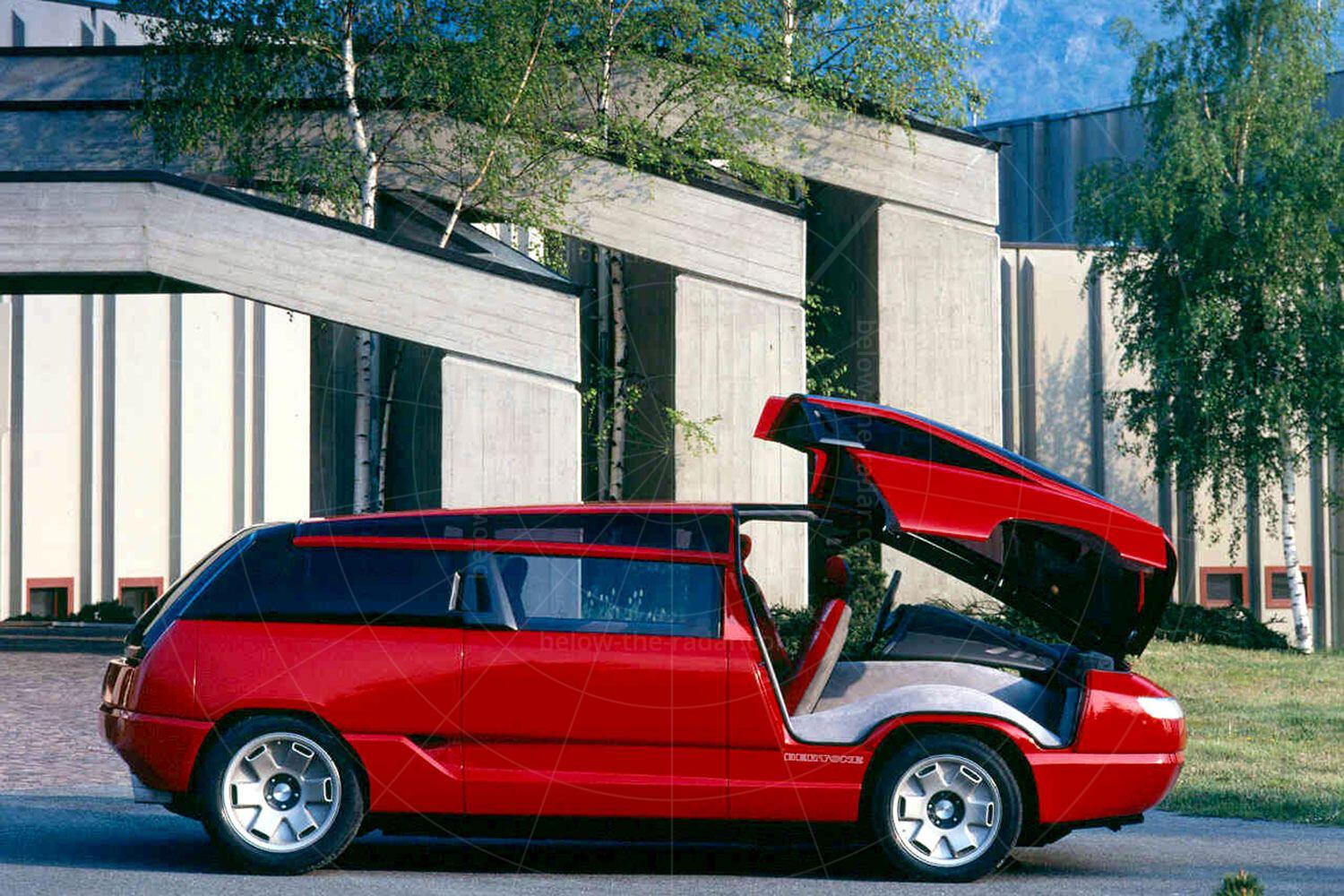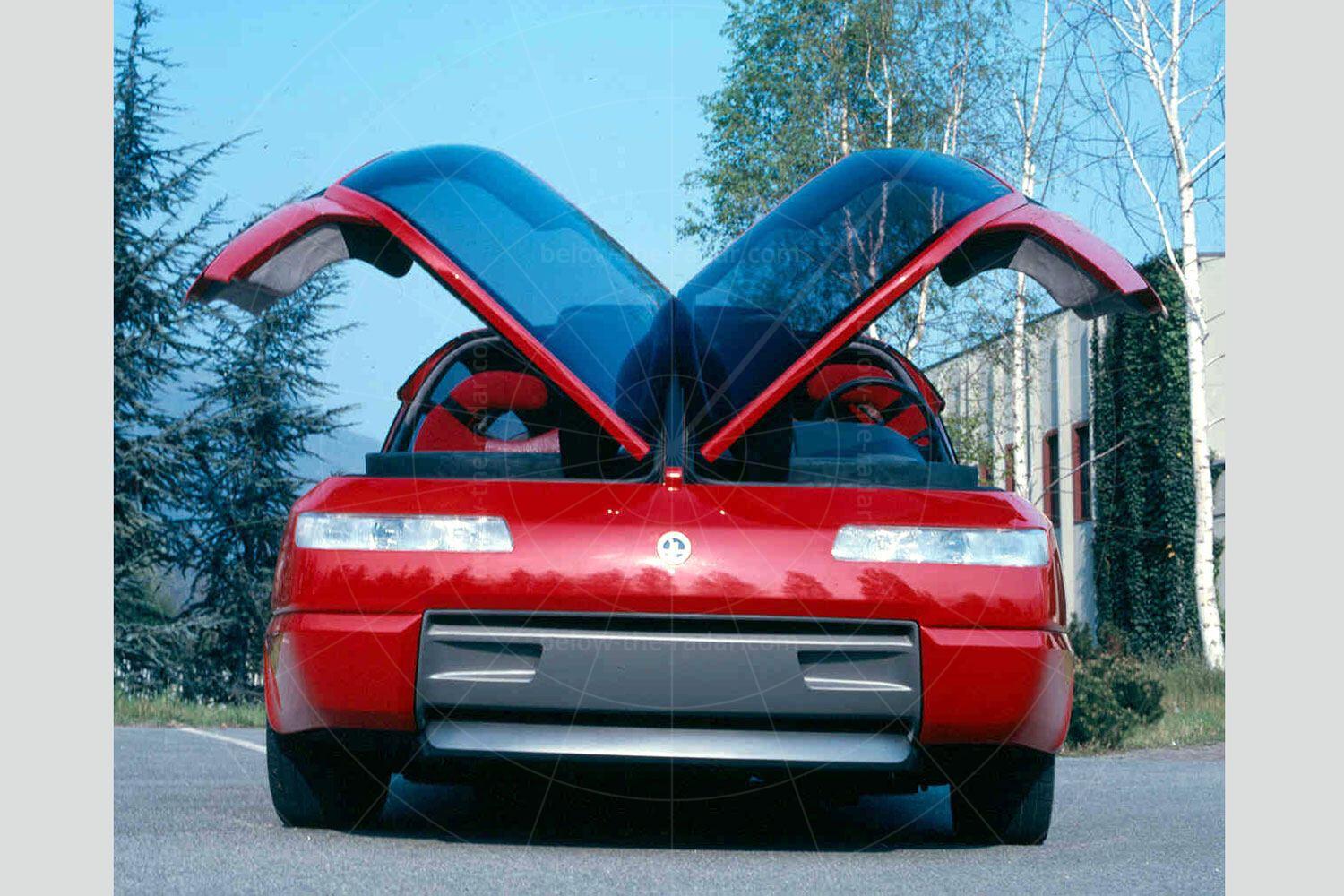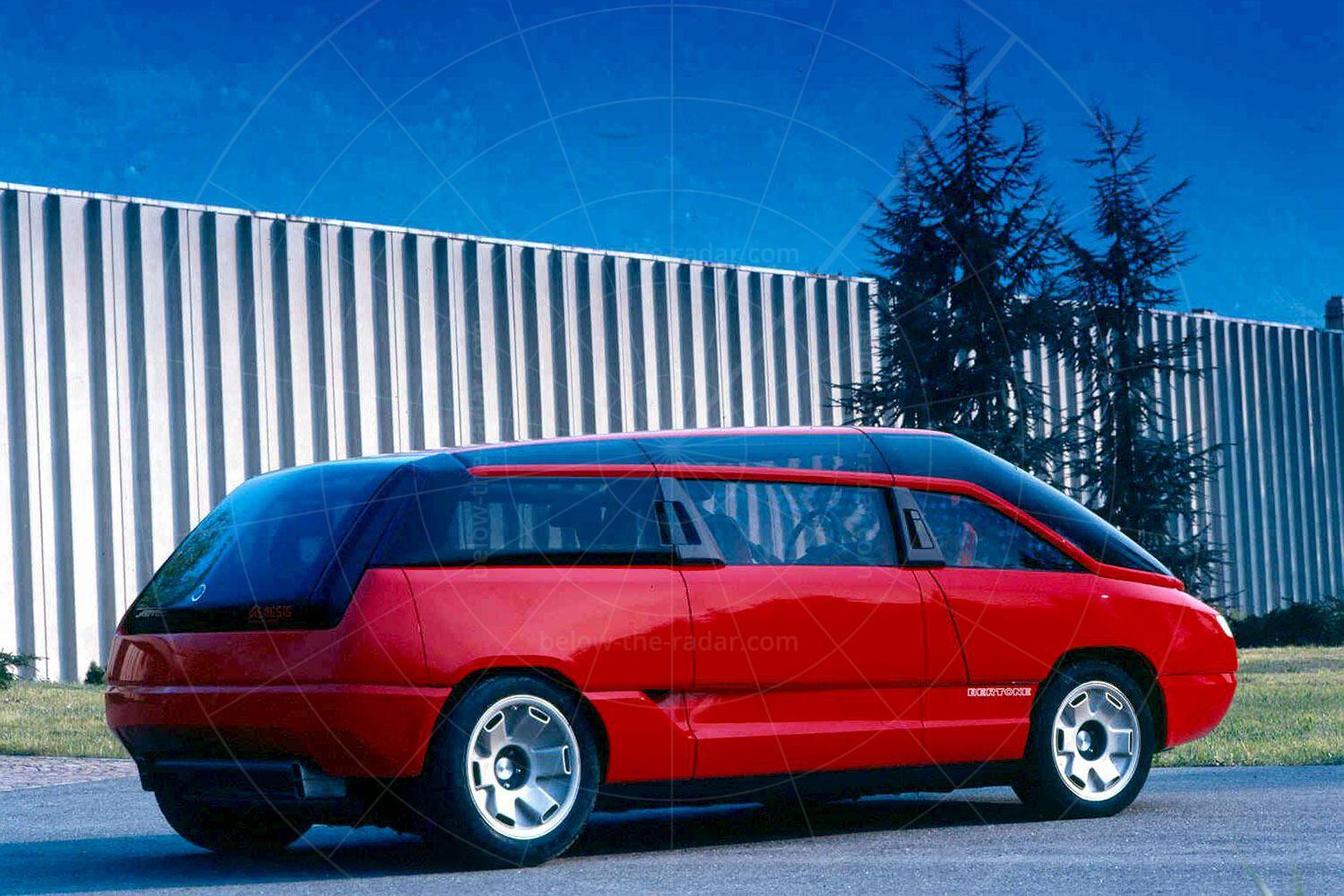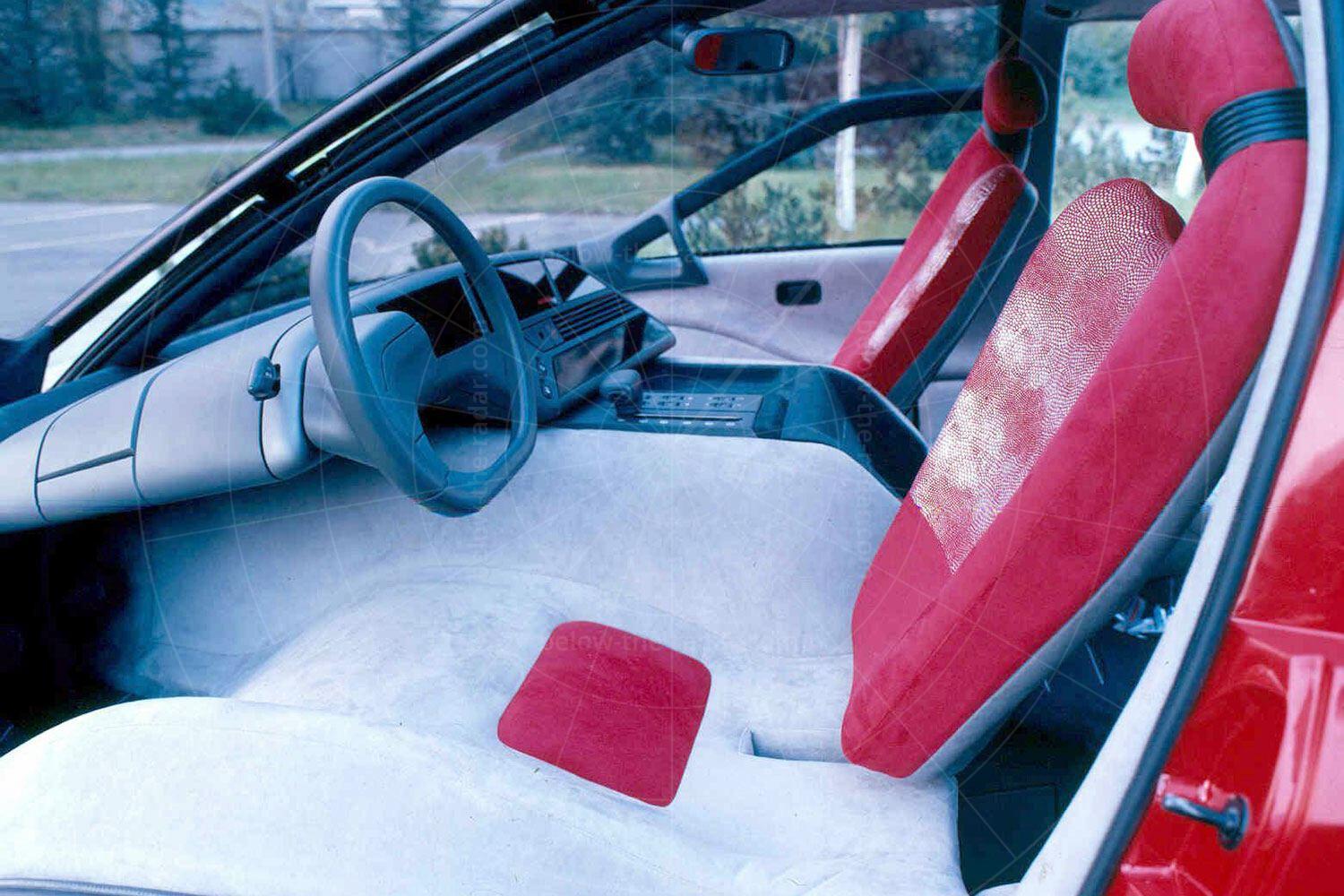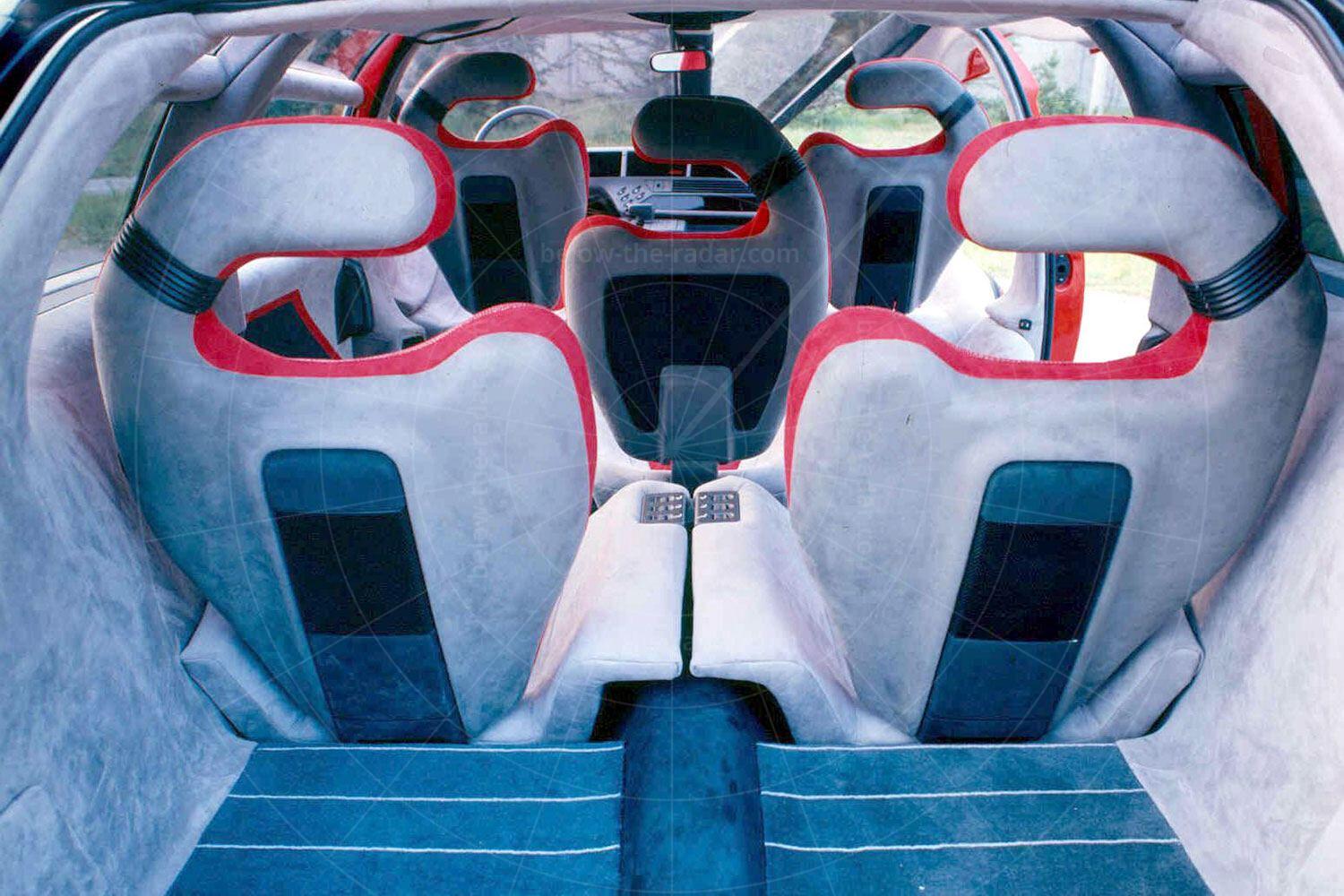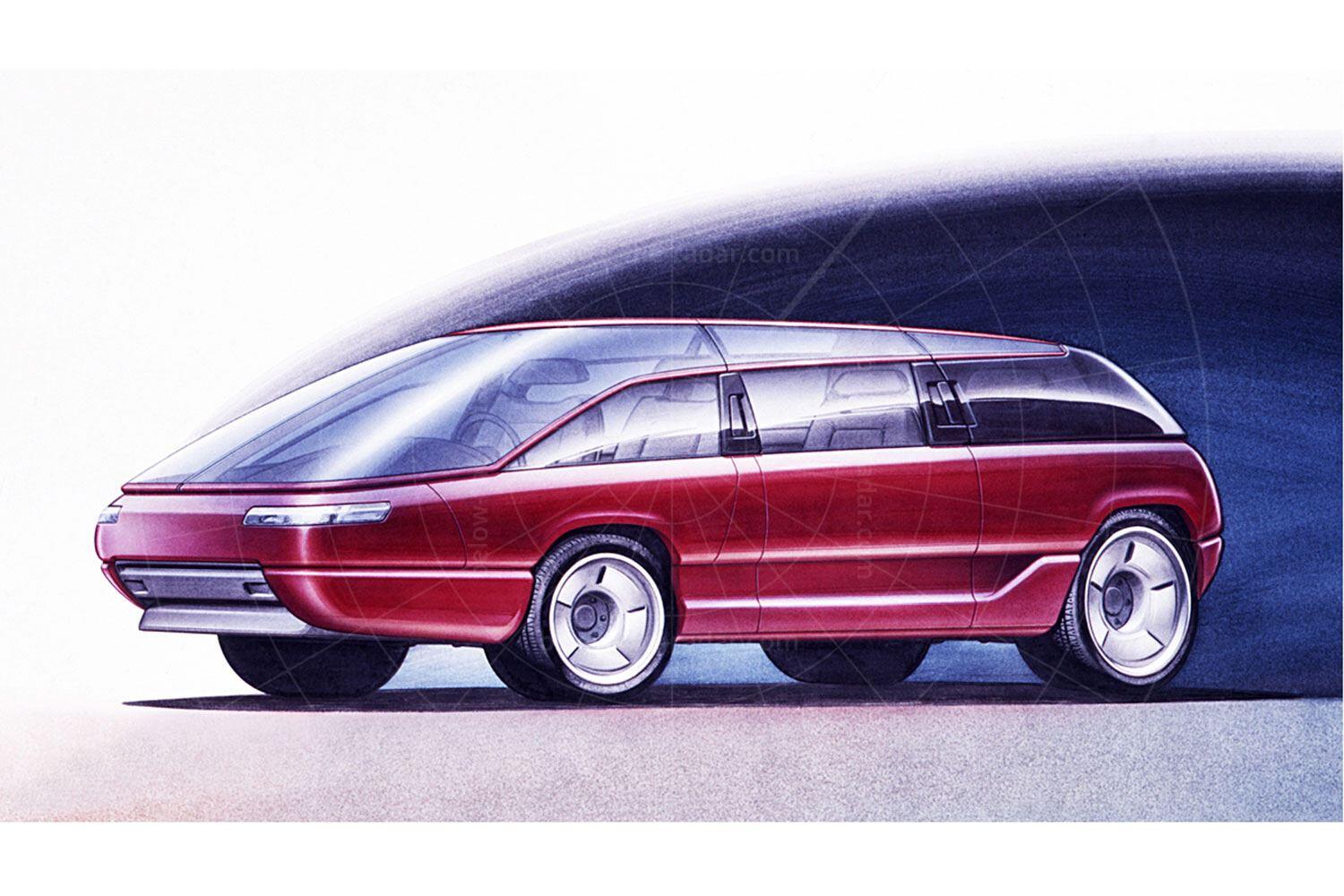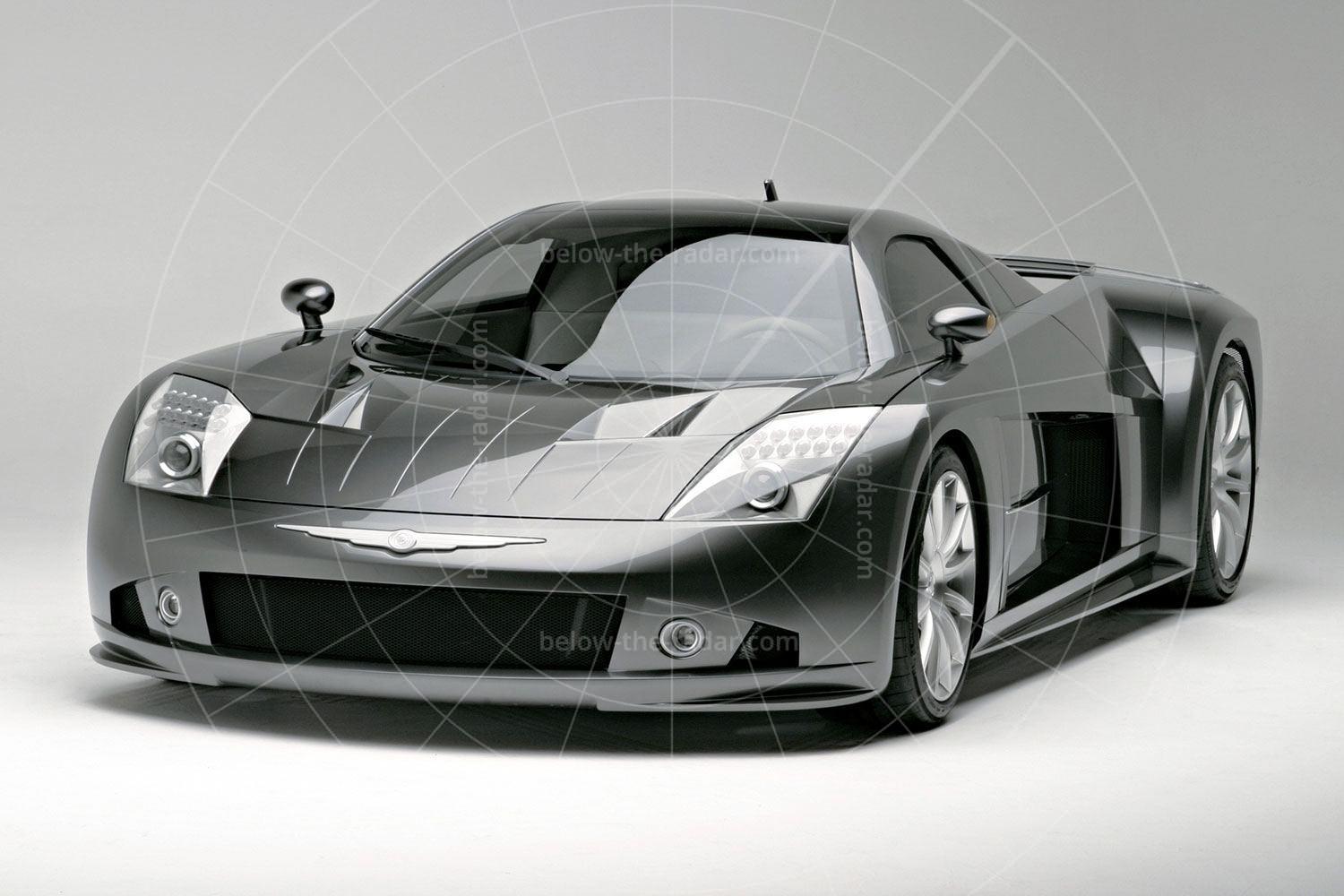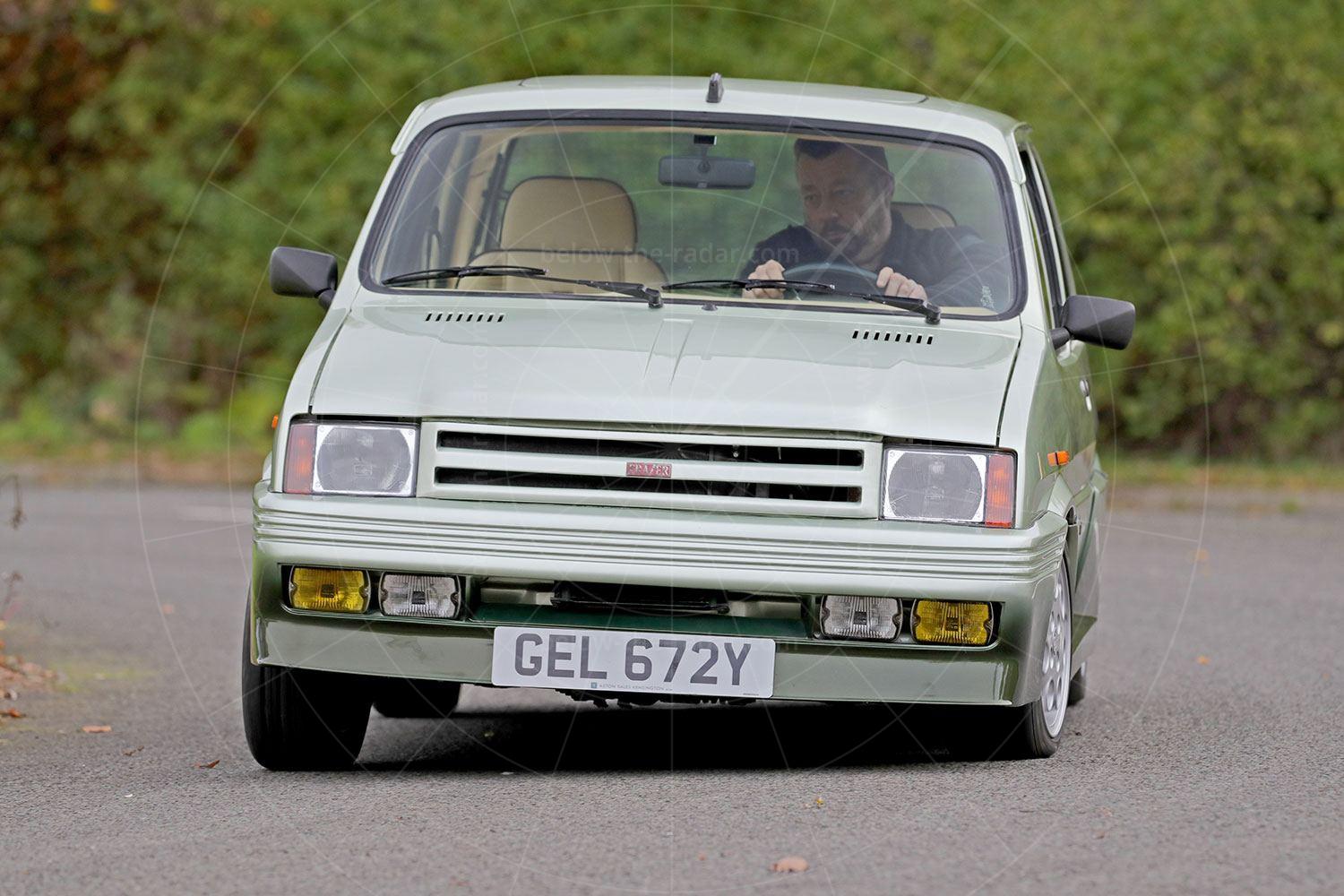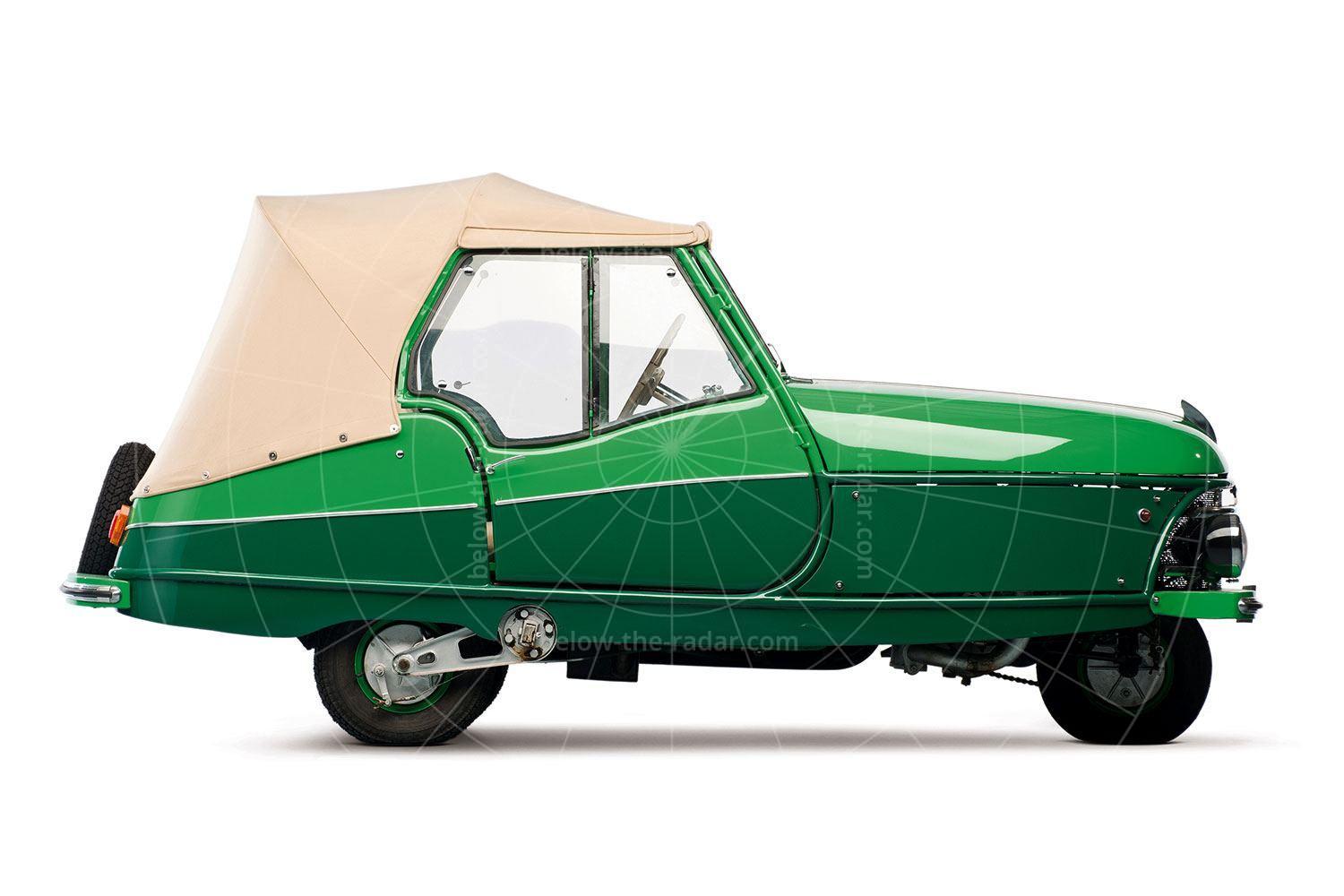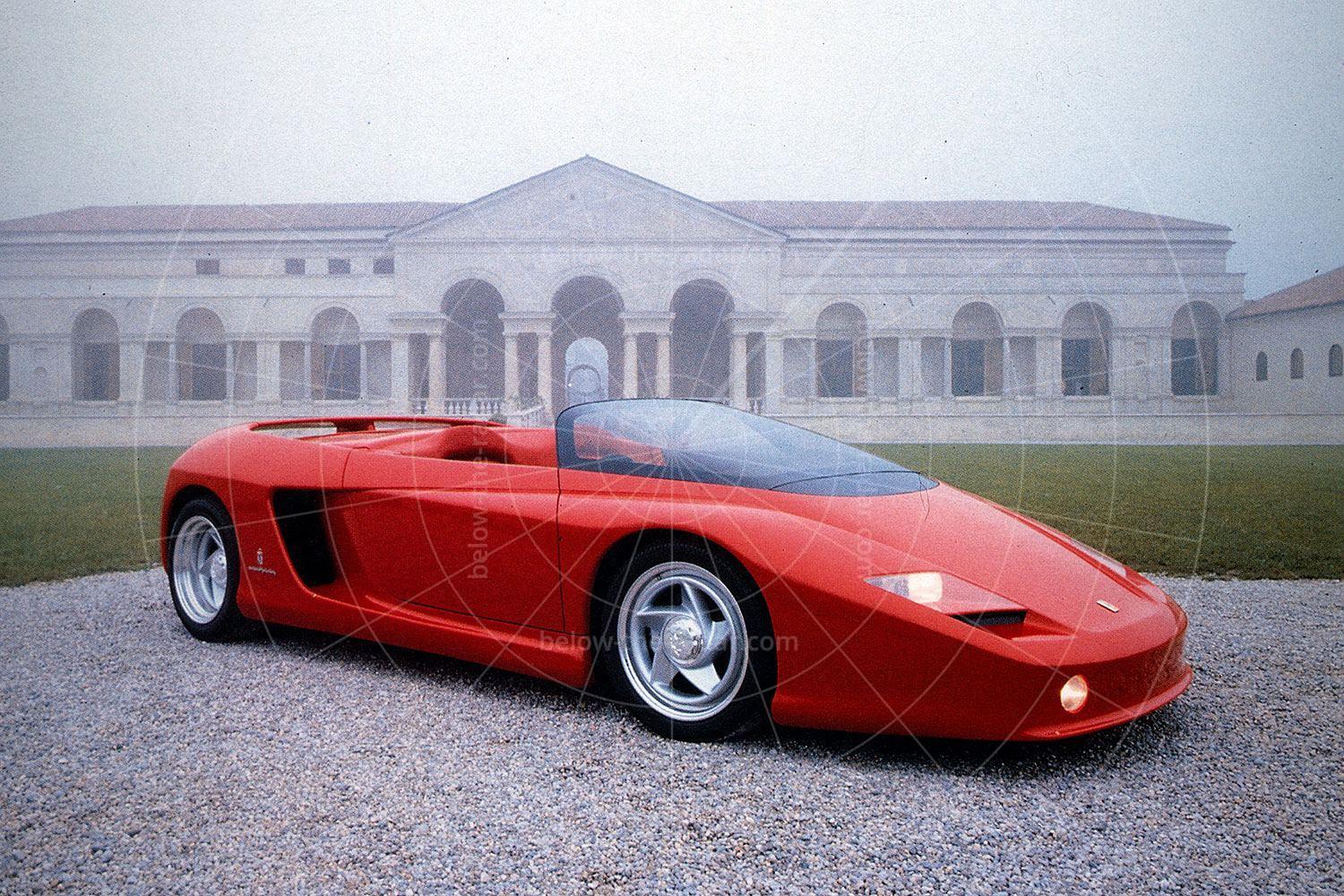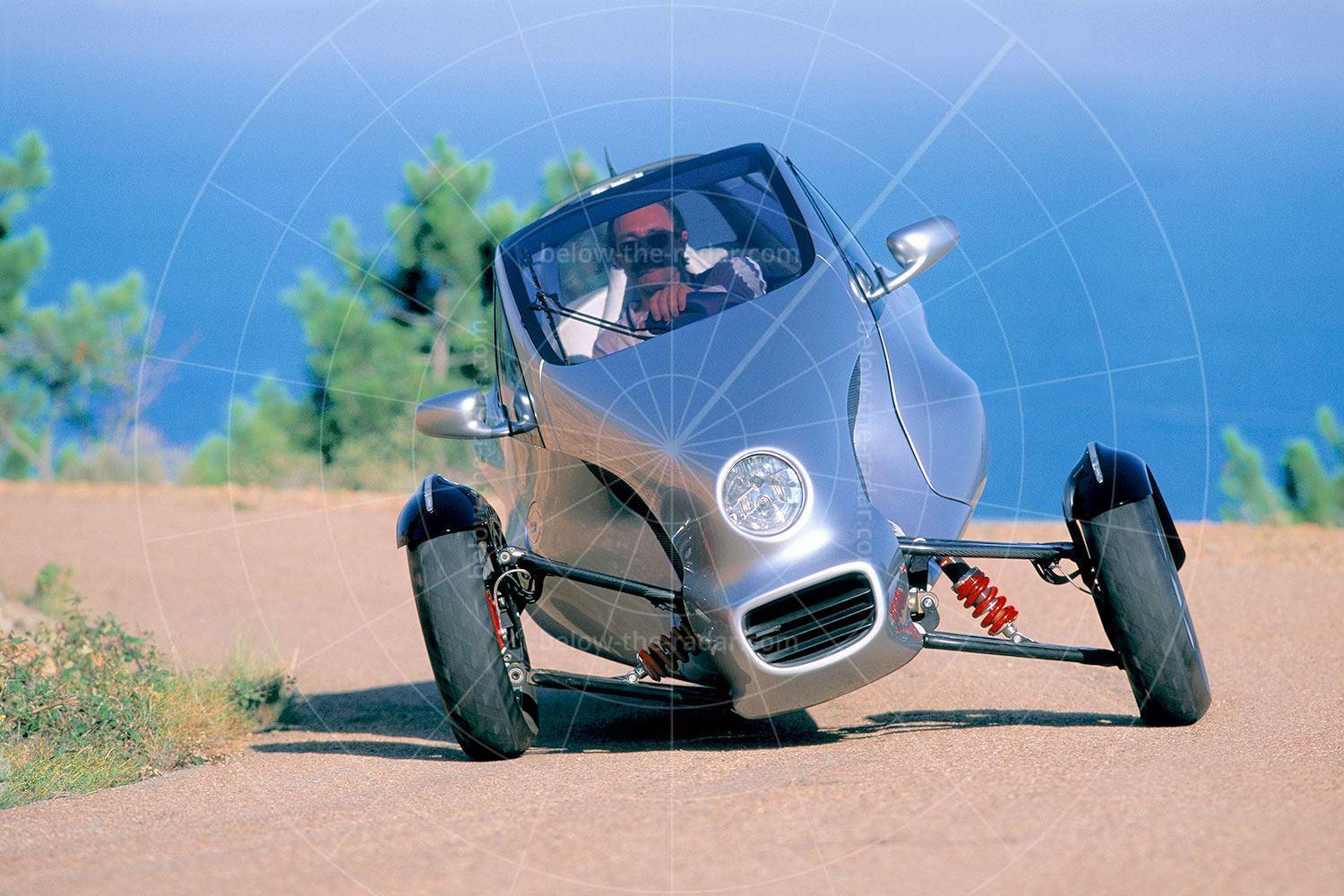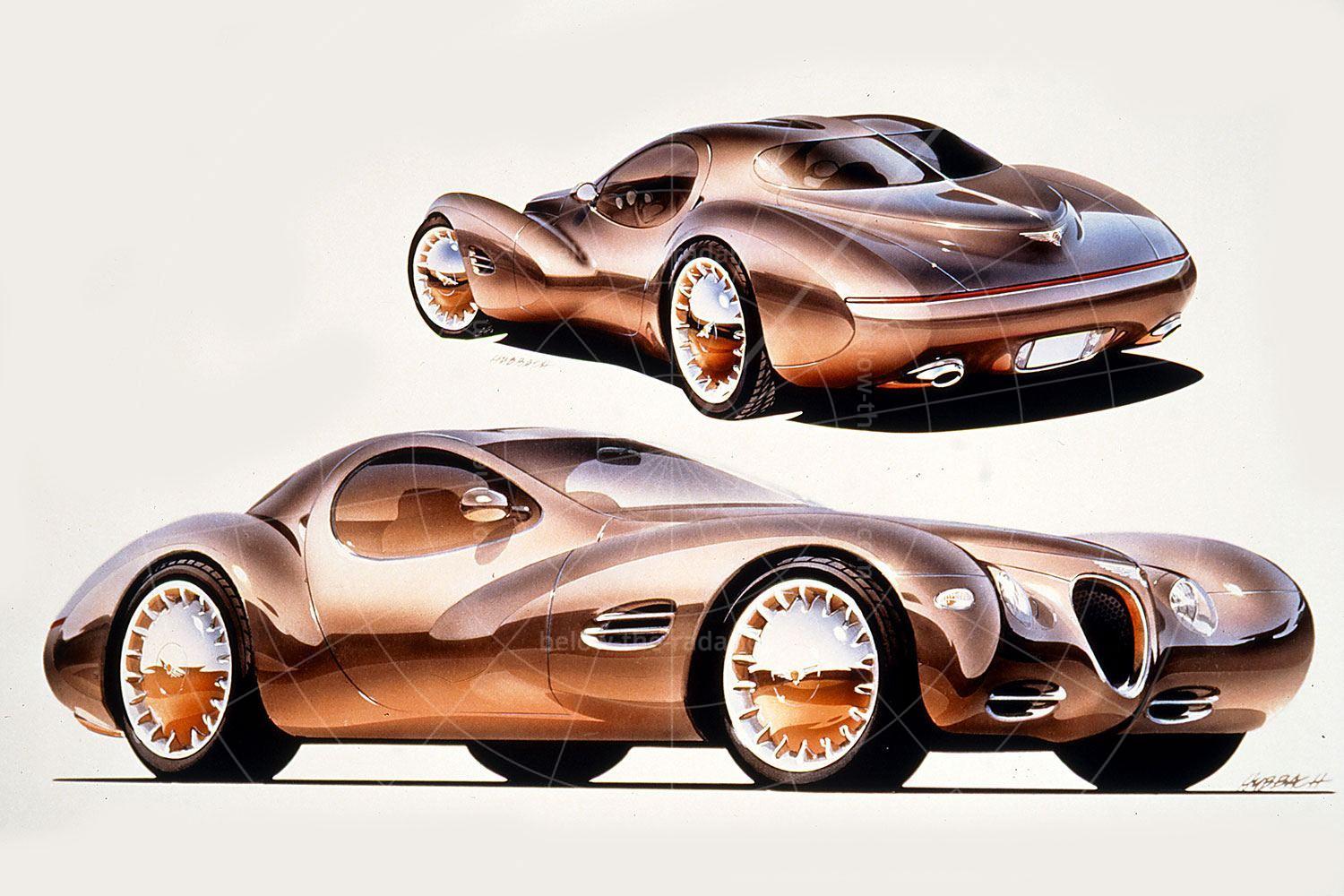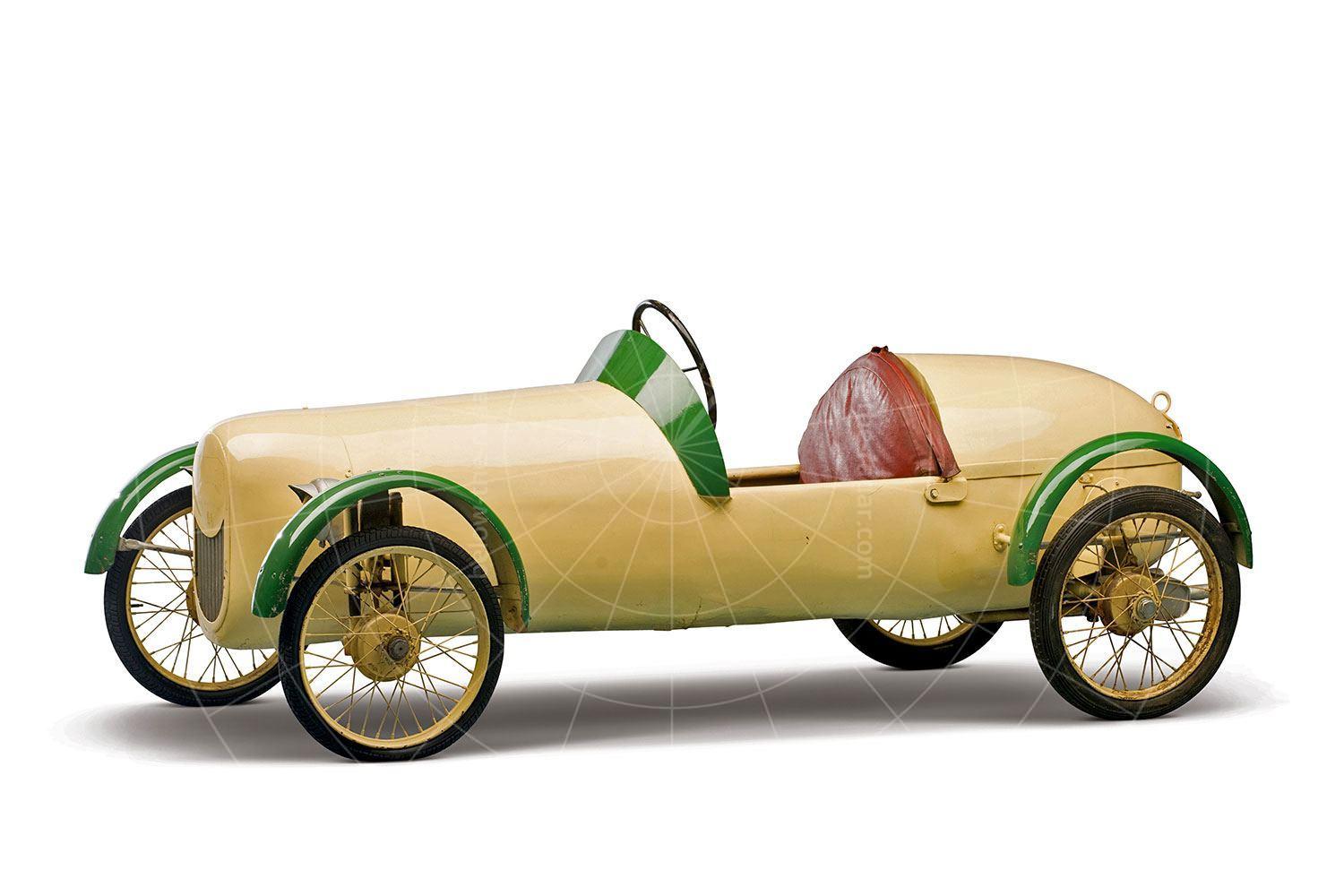Although multi-purpose vehicles (MPVs) didn’t really take off until towards the end of the 20th century, Italian design house Bertone hit on the bright idea of creating a people carrier as early as the late 1980s – with a Lamborghini Countach engine. And why not, given the fact that concept cars are invariably madly impractical and consequently guaranteed to glide into obscurity as soon as a motor show closes? The problem was, if an MPV is supposed to be all about practicality, Bertone’s creation was rather short on this. Badged the Genesis and unveiled at the 1988 Turin motor show, this confection attempted to make the MPV a sexy commodity.
The Genesis was certainly eye-catching with its monobox styling, bright red paint and huge amounts of glass. But perhaps the most astonishing aspect was the pair of sort-of-beetlewing doors which were hinged down the centre of the windscreen – with the doors themselves each containing one half of the front ‘screen. With a distinct wedge profile at the front, the Genesis was something of a Revelation – as Autocar magazine put it.
While Bertone didn’t want to be drawn on what type of car the Genesis was, most onlookers dubbed it a people carrier. The problem was that already by this stage a decent people carrier offered up to seven seats, and the Genesis could accommodate only five. That meant it wasn’t necessarily any more useful than a decently sized estate car, but how many of those could claim to pack a 5.2-litre V12 engine with 455bhp?
With an overall length of 14ft 8ins the Genesis was reasonably compact, but thanks to a width of 6ft 9ins it had a ridiculously over-generous girth. At least it wasn’t too tall, with a height of just five feet – after all, this was supposed to be a sporty MPV.
Clamber into the Genesis and you were greeted by a seating position that was semi-reclining, but still quite high up so you were looking down on what was going on around you. With a pair of bucket seats up front and another three of them behind, there was plenty of room for five. The front passenger seat was also able to swivel through 180 degrees so it faced the rear seats, and thanks to that generous width there was masses of space inside.
Intriguingly, the front seats were placed more or less on top of the engine, which would have provided all sorts of maintenance problems. However, Nuccio Bertone had an answer for this: “I’m convinced that – in the near future – reliability will be so good that we will not have the need to reach the engine compartment easily any more. A car will be like a fridge; it will work for years and years without the need for maintenance”. Hmm, a Lamborghini V12 engine not needing any attention for tens of thousands of miles? Sounds optimistic…
To get inside there were those huge not-really-beetlewing doors for front seat pasengers and a conventional sliding door (but only on the offside) for rear seat passengers. To get into the luggage space there was an all-glass tailgate, below which was a huge body-coloured bumper which wasn’t broken up with any styling details at all. In fact it was really rather bland apart from its wide and squat proportions.
The Genesis may have packed a 455bhp V12 punch, but it was in danger of holding up fully laden electric milk floats thanks to its lack of development. Not only did the concept weigh the best part of two tons, but the gear ratios were completely unsuited to the vehicle, being far too long to give it acceleration strong enough to get the juices flowing. With a three-speed automatic gearbox, the transmission was hardly what you’d call sporty, which rather defeated the object of this ‘sporting’ MPV.
As if the lack of performance wasn’t enough of a let down, the chassis was never set up properly so nothing functioned as it should have done. The brakes were okay, but the suspension was completely inappropriate for the car’s mass and weight distribution. The result was a car that bobbed and weaved all down the road, upset by the slightest imperfection in the Tarmac.
Of course the disappointing dynamics were something that could have been sorted with proper development, but the Genesis was never supposed to be a fully sorted road car. After all, it may have looked great and pushed the design boundaries, but making money with a V12-powered people carrier was always going to be a rather big ask.
| Vital statistics | |
|---|---|
| Debut | Turin, 1988 |
| Engine | Front-mounted, 5167cc, V12 |
| Transmission | 3-speed auto, rear-wheel drive |
| Power | 455bhp |

